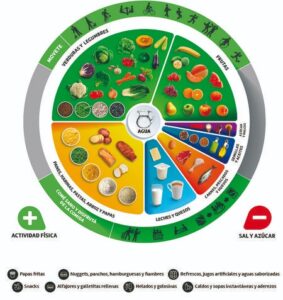
Having a healthy heart or undergoing cardiac rehabilitation consists of two parts:
- Physical training: performing exercises in a safe and healthy way, strengthening muscles and improving physical endurance.
- Education and Training: understanding that if I maintain a good diet I can improve my quality of life, to do so I must know how to identify the appropriate foods and the correct preparation methods.
Healthy eating aims to:
- Reduce cholesterol or improve lipid profile.
- Control body weight.
- Help control blood pressure by replacing table salt with seasonings.
- Control blood sugar levels if you have type I or type II diabetes.
GENERAL RECOMMENDATIONS:
- Limit consumption of saturated fats and trans fats, reduce consumption of red meat, cold cuts and sausages, whole dairy products, very fatty or hard cheeses, pastries or biscuits, alfajores or similar.
Increase consumption of fish, tuna in water, low-fat dairy products and low-fat cheeses. You can use wholemeal flour, oatmeal, chickpea, rice, among others, making homemade preparations with natural sweeteners (for example, using fruit or dates).
- Limit the consumption of table salt; more than half of the sodium consumed by Uruguayans comes from “hidden salt”, meaning all foods contain sodium in one way or another.
Replace salt consumption with natural seasonings such as garlic, parsley, turmeric, saffron, oregano, paprika, white pepper and black pepper, among others.
- Avoid eating ultra-processed foods and frozen products that are breaded or pre-fried. These are loaded with fats, sugars and excess calories, and are not the best option.
Choose wisely, looking for foods with the least amount of added products; this is where we should look at the nutritional table with the ingredients.
- Generally, there is a low consumption of dietary fiber, due to a lack of intake of fruits and vegetables, as well as of cereals with fiber or legumes.
Incorporate at least 5 servings of raw and/or cooked vegetables and fruits into your diet; this will help cover your vitamin and mineral requirements. Also, include legumes such as beans, lentils and chickpeas (in salads, vegetable casseroles and healthy snacks), oat flour, chickpeas or other flours, and rolled oats, which will help increase your daily dietary fiber, greatly benefiting your body.
- For practical reasons, fried preparations or stir-fries are used, where the oil is exposed to a significant increase in temperature, which is not suitable.
We should cook in the oven, steam, wok or grill, always looking for healthier methods and trying to incorporate raw oil at the end of the preparations.
- The consumption of mate, tea, coffee, soups, broths, fruit juices or cola drinks are not counted as hydration fluid.
You should hydrate with water and you should not wait until you are thirsty to drink it.